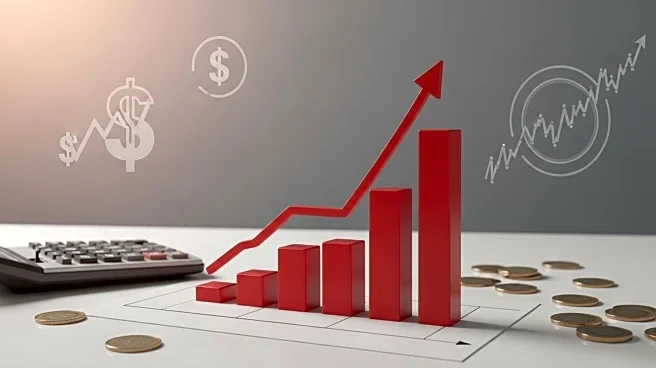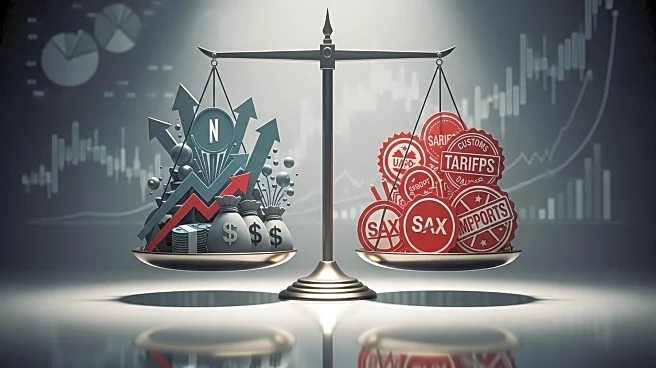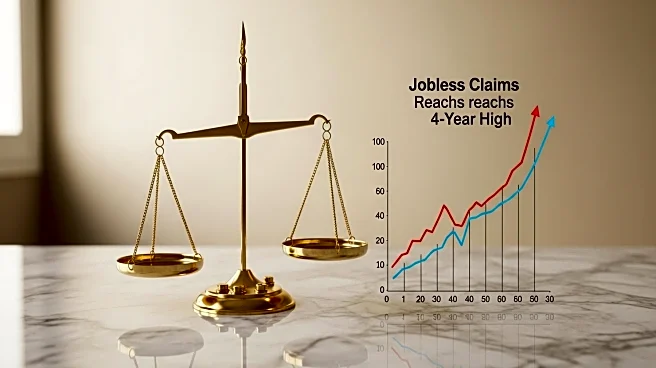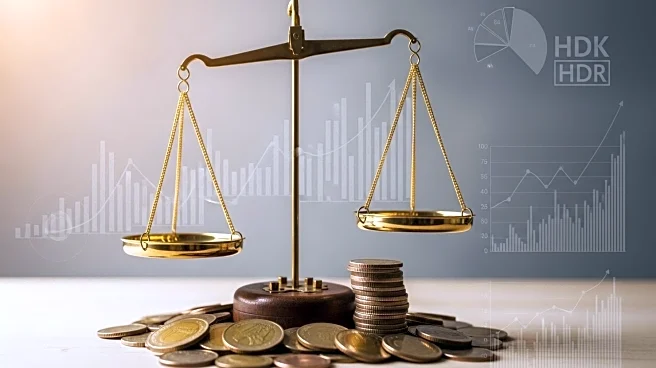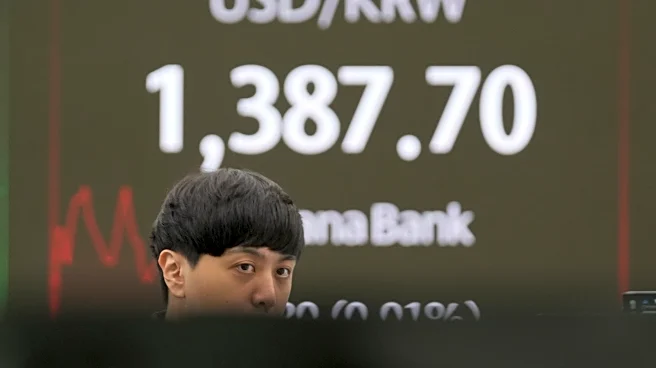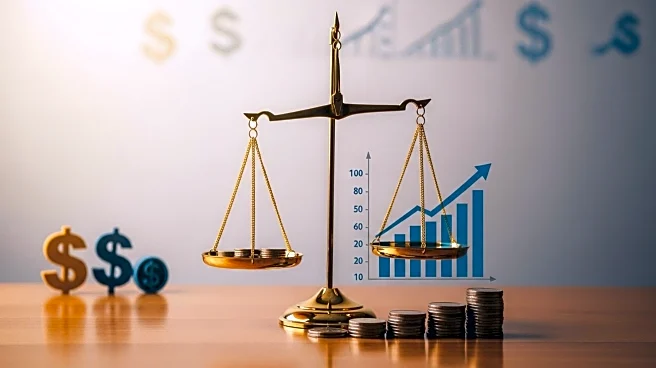What's Happening?
Inflation in the United States rose slightly in August, with the consumer price index (CPI) showing a 2.9% increase over the past year. This rise is attributed to companies passing the costs of tariffs imposed by President Trump onto consumers. The core CPI, which excludes volatile food and energy prices, remained stable at 3.1%. Despite the inflation uptick, Wall Street remains optimistic about a potential interest rate cut by the Federal Reserve at its upcoming meeting. The Fed is under pressure from President Trump to reduce rates, but concerns about a weakening job market may influence the decision.
Why It's Important?
The increase in inflation, driven by tariffs, highlights the ongoing impact of trade policies on the U.S. economy. Higher consumer prices can erode purchasing power and affect household budgets. The Federal Reserve's decision on interest rates is crucial, as it balances the need to control inflation with supporting economic growth. A rate cut could stimulate the economy but may also risk further inflation. The situation underscores the complex interplay between trade policies, inflation, and monetary policy, with potential implications for businesses, consumers, and the broader economy.
What's Next?
The Federal Reserve is expected to announce its decision on interest rates on September 17. Investors anticipate a quarter-point rate cut, which would be the first since December. The Fed's decision will likely consider the dual challenges of rising inflation and a weakening job market. Businesses and consumers will be closely watching the outcome, as it could influence economic conditions and financial markets. The ongoing impact of tariffs and trade policies will continue to be a key factor in economic discussions and policy decisions.
